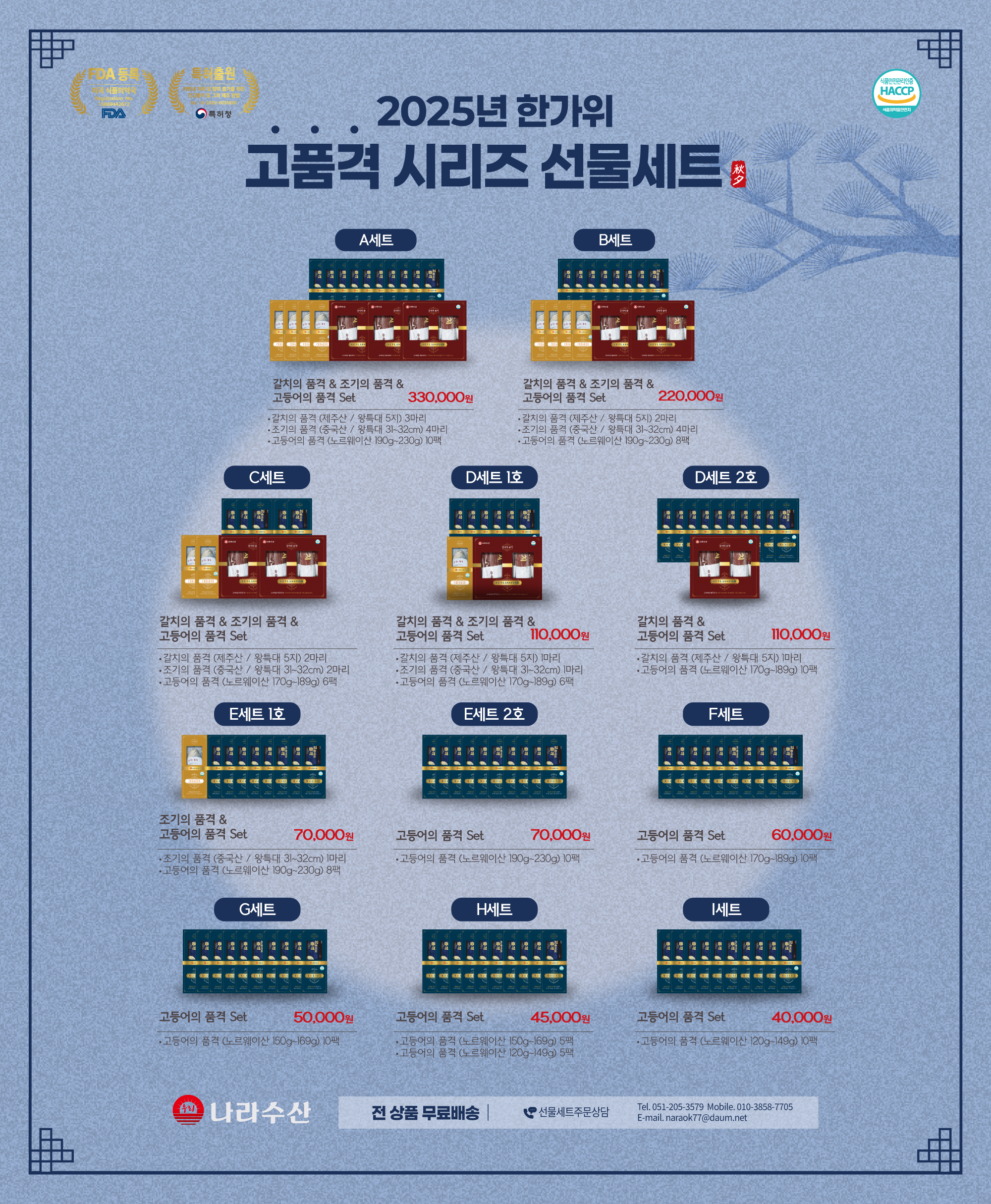Processing Procedure
Brochure
We strive with pride as the top mackerel company in South Korea, driven by a sense of accomplishment and a commitment to sound corporate values.
Work processes that are carefully groomed and hygienically managed by veteran professionals
As part of our food safety efforts, we have implemented HACCP principles throughout our processing operations. HACCP is a systematic approach to identifying, evaluating, and controlling potential risks in food production. These active systems closely analyze each stage of the processing task to identify critical control points and establish actions to prevent potential risks. This rigorous approach maintains the highest level of food safety and minimizes the risk of contamination or foreign substances.
Removal of Head
Carefully remove the fish's head using specialized tools and techniques at this stage. This process separates the head from the torso, allowing further processing of fish.
Removal of Bones and Intestines
After removing the head, an experienced worker removes bones and guts from the fish. This delicate process precisely extracts internal organs, including the gut, gills, and other undesirable parts, leaving a clean, boneless fillet.
Preliminary Cleaning (Secondary Bones and Internal Organs)
After removal of the bones and guts, the fish undergoes a preliminary washing step. This step involves thorough rinsing to remove any remaining bone fragments, scales, or internal organs from the previous step. The preliminary wash ensures the best cleanliness of the fish before further processing.
Wash (Quick wash with coolant, 6 times)
To achieve the highest level of cleanliness, fish undergo a series of thorough cleaning. This process typically involves six quick dips of the fish into coolant to effectively remove any remaining impurities, mucus or residue. Each washing cycle helps to further purify the fish and maintain freshness.
Blood Removal:
After three cleaning processes, it is immersed for about 25 to 30 minutes to remove blood, which is important for removing fishy smell and preventing residual foreign substances after cooking to create a clean taste. Work in clean ice water to avoid damage to the soft flesh of mackerel.
Salting
After the washing process, the fish can be salted depending on the final product you want. Salting helps increase flavor, preserve fish, and improve texture. Nara Seafood use low-sodium kelp salt, domestically sourced premium-quality Chinese matrimony vine(gogi berries) and shiitake mushrooms in salting process, results in a product that not only consoders flavor but also prioritizes health.
Arranging
It is a careful process of arranging and listing fish fillets in the right order. Skilled workers carefully lay out and arrange the fillets in a neat and uniform manner, ensuring precise alignment and consistency. It facilitates efficient rapid cooling, optimizes space utilization, and ensures the overall shape of the final product is well-formed.
Fast Freezing
The fillets of fish, after undergoing the arranging process, are rapidly frozen Fast freezing is a process that rapidly lowers the temperature of the fish to -36 degrees Celsius or below. This low temperature inhibits the growth of microorganisms, enzymes, and other deteriorating factors, effectively maintaining the quality and freshness of the fish while extending its shelf life.
Promise of Safe Seafood
We strive for sustainable and responsible seafood processing.
Cooperation and Operational Optimization
We work together to optimize operations and minimize environmental impact.
We use advanced and specialized technologies
to preserve taste, texture, and nutrition.
Our unique approach to seafood processing provides customers with the freshest and most flavorful fish, while minimizing their impact on the environment.

